
Table of Contents
- Day 1: Departure and Arrival
- Day 2: Coastal Beauty
- Day 3: Rugged Wilderness
- Day 4: Clifftop Marvels
- Day 5: Farewell to North Devon
North Devon, with its rugged coastlines, pristine beaches, and wild expanses, had always held a mystique for us. So, when the opportunity presented itself for an August road trip through this picturesque region, we couldn’t resist. We set out to explore North Devon’s natural wonders, camping under the starlit skies, and immersing ourselves in the region’s beauty.
We invite you to join us on our five-day journey through North Devon. We’ll provide insights, share personal experiences, and offer recommendations for fellow adventurers eager to discover this gem of the United Kingdom. Our adventure began with an early morning departure from home, packed with excitement and ready for the unexpected.
Day 1: Departure and Arrival
The first day of our North Devon adventure started with a dawn awakening, fueled by anticipation. With our trusty vehicle loaded up, we set out on the open road, leaving behind the familiar and venturing into the unknown. Here’s a glimpse of our first day:
Packing Essentials

Before embarking on any road trip, especially one involving camping, meticulous packing is essential. Our checklist included:
Camping Gear:
- A sturdy tent.
- Warm and comfortable sleeping bags.
- Cooking equipment, including a portable stove.
- Compact camp chairs for relaxation.
Navigation Tools:
- GPS and maps to ensure we never strayed too far from our chosen path.
- A trusty compass for when technology fails.
Clothing:
- Layers for varying weather conditions, as North Devon can be unpredictable.
- Rain gear, including waterproof jackets and pants.
Food and Water:
- Non-perishable snacks for on-the-go sustenance.
- Reusable water bottles to stay hydrated.
- A cooler for fresh supplies, particularly perishables.
Vehicle Essentials:
- A spare tire and necessary tools.
- A vehicle safety kit, just in case.
As the miles ticked away, we marveled at how the landscapes changed. From the hustle and bustle of urban life, we soon found ourselves amidst rolling hills and expansive meadows. It was a testament to the diverse beauty that the United Kingdom has to offer.
Arrival at Croyde Bay Campsite
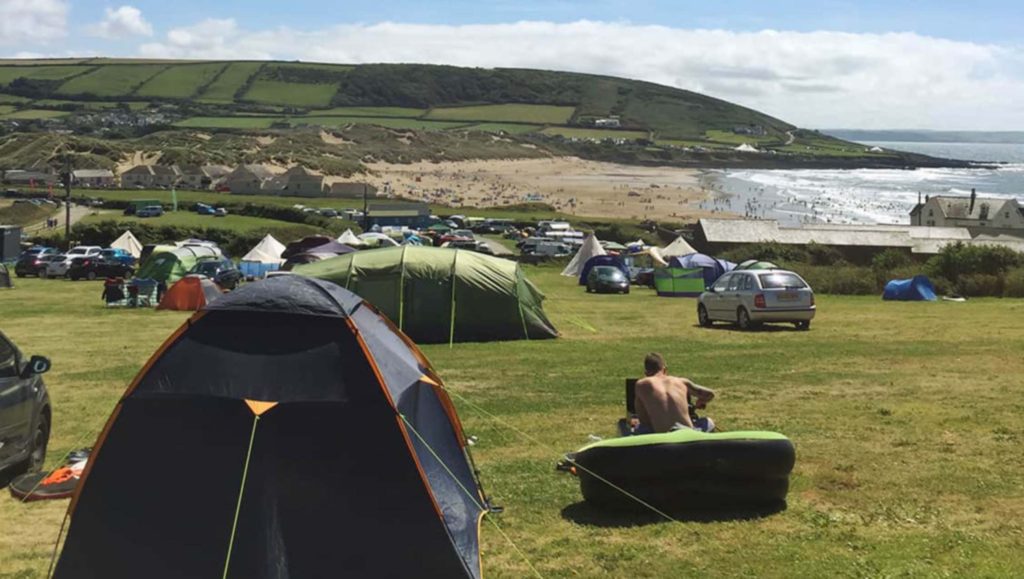
Our first destination was Croyde Bay, a place known for its pristine beaches and excellent surf. Upon arrival at Croyde Bay Campsite, we were met with the refreshing scent of the sea carried on the breeze. The friendly campsite staff made us feel right at home, and we soon discovered that we had chosen the perfect place to begin our adventure.
Croyde Bay Campsite offered various pitch options, and we selected one with a view of the dunes and the sparkling Atlantic Ocean beyond. It was a postcard-worthy scene that greeted us every morning. Setting up our campsite was a breeze, thanks to the efficiency of our practiced routine.
Campsite Reservations
One valuable lesson we’ve learned from our travels is that during peak summer seasons, it’s wise to make campsite reservations well in advance. This ensures you secure the best location and access to necessary amenities.
With our campsite established, we couldn’t wait to explore the renowned beauty of Croyde Bay’s coastline.
Day 2: Coastal Beauty
Our second day in North Devon was dedicated to experiencing the region’s coastal beauty to the fullest. The day began with a hearty breakfast prepared at our campsite, setting the tone for an exciting day of exploration. Here’s how we spent our time:
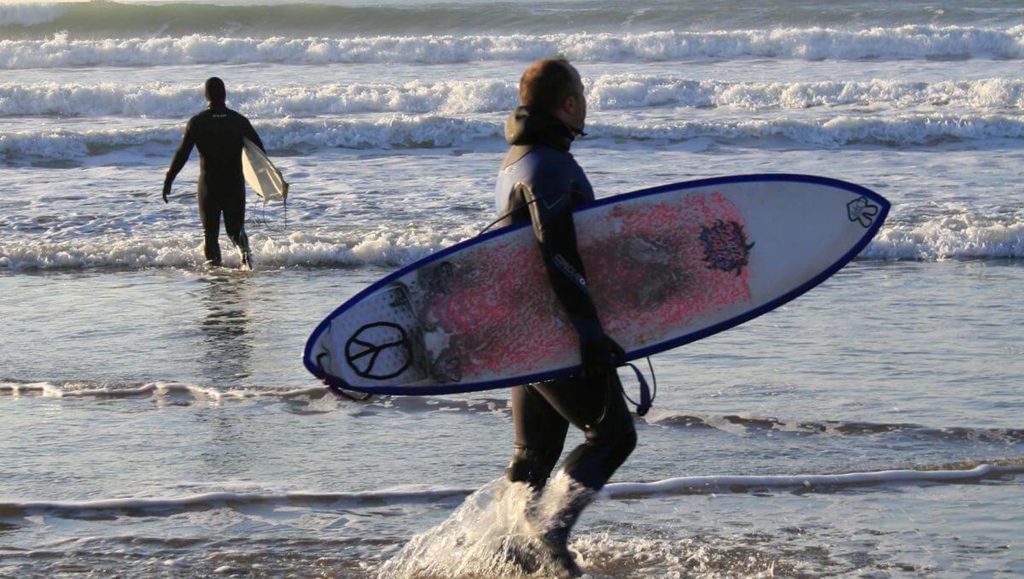
Surfing in North Devon
- In the morning, we headed straight to Croyde Beach, renowned for its excellent surf conditions.
- The rolling waves and clear waters provided the perfect setting for surfers of all levels, from beginners to seasoned riders.
Travel Tip 1: Surfing Lessons
- If you’re new to surfing, consider booking a lesson with one of the local surf schools. They provide professional guidance and ensure a safe and enjoyable experience.
- Experienced surfers should keep an eye on the surf forecast, which can be easily checked online or through mobile apps. This helps you time your sessions for the best waves.
Coastal Exploration

In the afternoon, we embarked on a scenic drive along the North Devon coast, stopping at several breathtaking viewpoints that allowed us to fully appreciate the region’s coastal beauty:
Baggy Point:
- We began our exploration at Baggy Point, a headland that offers panoramic views of the coastline.
- A hike along the well-marked trails provided us with glimpses of diverse wildlife and an opportunity to soak in the sea breeze.
Hartland Quay:
- Our next stop was Hartland Quay, a rugged and dramatic stretch of coastline.
- The jagged cliffs and crashing waves created a dramatic scene, and we explored the quaint quay with its museum and café.
Travel Tip 2: Coastal Hiking
- Wear sturdy hiking boots with good traction, as some coastal paths can be slippery.
- Bring a pair of binoculars for birdwatching, as North Devon’s cliffs are home to various seabird species.
As the sun began its descent into the horizon, we found ourselves back at Croyde Bay, where we enjoyed a serene evening on the beach. The sound of waves crashing on the shore and the sight of the sun setting over the Atlantic made for a perfect ending to our second day.
Day 3: Rugged Wilderness
Our third day in North Devon introduced us to the rugged wilderness of Exmoor National Park. It was a day of contrasts, where we traded the sandy shores of Croyde Bay for the untamed beauty of Exmoor’s woodlands and hills.
Croyde Bay Campsite: Coastal Comfort

- Before leaving Croyde Bay, we stocked up on supplies, including food, water, and camping essentials.
- We knew that our next destination, Woody Bay, would be more remote, so we wanted to be well-prepared.
Woody Bay Wild Camping: Embracing Nature’s Solitude
Our journey led us to Woody Bay, a location within Exmoor National Park that is perfect for wild camping. We were prepared for a more primitive camping experience compared to Croyde Bay Campsite, but it offered a unique opportunity to immerse ourselves in the untamed beauty of Exmoor. We pitched our tent amidst ancient woodlands, with the tranquil sounds of running streams and rustling leaves as our lullaby.
Travel Tip 3: Wild Camping Locations
- Research and familiarize yourself with wild camping regulations in the area you plan to visit. Not all places allow wild camping.
- Choose a campsite that is at least 200 feet away from water sources to minimize environmental impact.
Travel Tip 4: Camping Gear
- Invest in lightweight, compact camping gear. This makes it easier to transport and set up at remote locations.
- Bring a portable water filter or purification tablets to ensure access to clean drinking water.
Travel Tip 5: Wildlife Encounters
- Be respectful of the local wildlife. Keep food securely stored to avoid attracting animals to your campsite.
The experience of wild camping in Exmoor was both exhilarating and humbling. Surrounded by the ancient woodland and the absence of light pollution, we were treated to a night sky filled with stars. It was a stark contrast to the previous night’s coastal views, and we relished the change.
Travel Tip 6: Wild Camping Etiquette
When wild camping, it’s essential to follow Leave No Trace principles. Respect the environment, pack out all waste, and leave the site as you found it.
Night Skies at Woody Bay
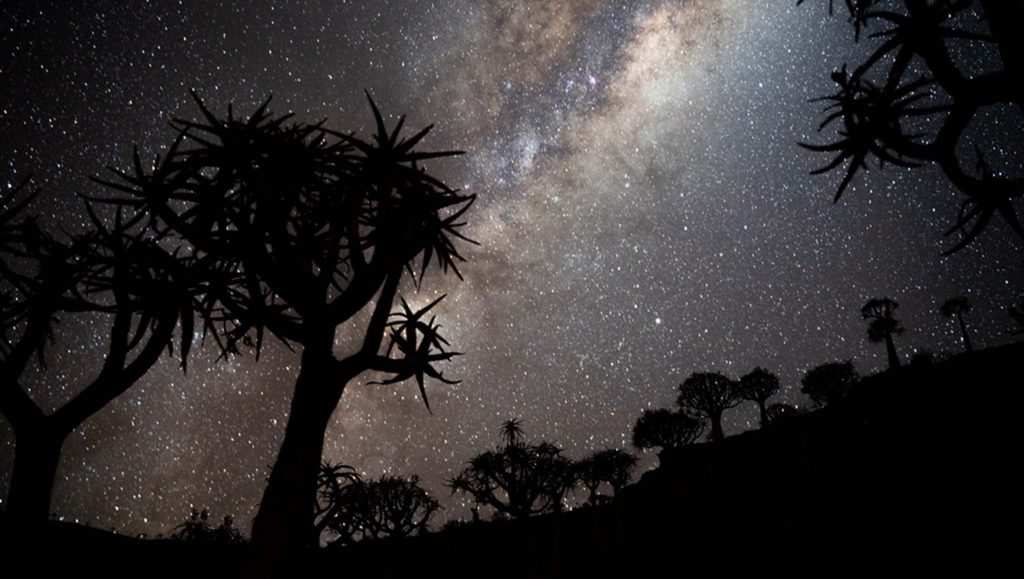
One of the highlights of our camping experience at Woody Bay was the opportunity to gaze at the night sky. Exmoor National Park is designated as an International Dark Sky Reserve, making it one of the best places in the UK for stargazing. On a clear night, we were treated to a breathtaking display of stars, planets, and even the Milky Way.
Travel Tip 7: Stargazing Essentials
- Bring a telescope or binoculars for a closer look at celestial wonders.
- Download a stargazing app to help identify constellations and planets.
Day 4: Clifftop Marvels
Our fourth day in North Devon was dedicated to exploring the clifftop marvels of the region. We packed up our campsite at Woody Bay and began our journey towards Damage Barton, a clifftop campsite that promised stunning views of the Atlantic.
Travel Tip 8: Damage Barton Camping
If you plan to stay at Damage Barton, book well in advance, especially during peak seasons. The campsite’s clifftop location offers unparalleled vistas.
Valley of Rocks: A Geological Wonder

Our first stop was the Valley of Rocks, a geological marvel where towering rock formations seem to defy gravity. We embarked on a hike through this otherworldly landscape, with each twist and turn revealing breathtaking vistas of the Bristol Channel.
Travel Tip 9: Hiking in the Valley of Rocks
- Wear sturdy hiking boots with good grip, as the terrain can be uneven.
- Take breaks to appreciate the panoramic views and capture stunning photographs.
Lynton and Lynmouth: A Cliff Railway Adventure
After our hike, we made our way to the picturesque towns of Lynton and Lynmouth. These neighboring towns are connected by a charming water-powered cliff railway, one of only a few of its kind in the world. The railway ride provided not only transportation but also unforgettable views of the surrounding countryside.
Travel Tip 10: Cliff Railway Ride
- Purchase a combined ticket for the cliff railway, which includes a round trip on both the Lynton and Lynmouth sections.
- Take time to explore both towns, with their quaint shops, cafes, and riverside walks.
Travel Tip 11: Coastal Driving
The drive along the North Devon coast, especially between Lynmouth and our final destination, Damage Barton, is a highlight in itself. The winding roads offer spectacular viewpoints of the rugged coastline and the expansive sea.
Arrival at Damage Barton
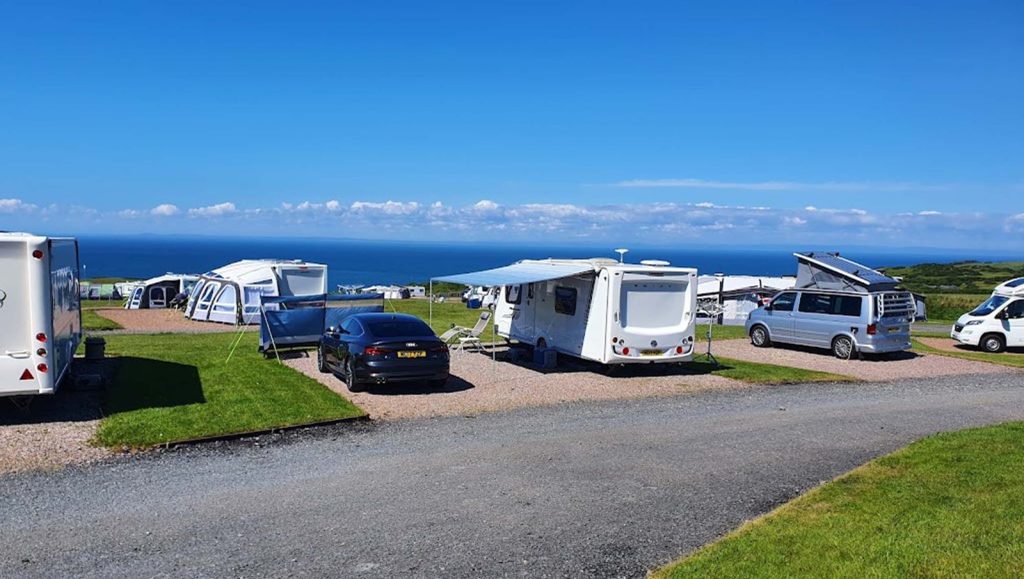
Our journey concluded at Damage Barton, a clifftop campsite overlooking the Bristol Channel. The campsite’s elevated location provided panoramic views of the ocean, and we were fortunate to secure a pitch near the cliff’s edge.
Travel Tip 12: Camping on the Cliff
- If you’re camping near a cliff’s edge, be cautious and follow all safety guidelines provided by the campsite.
- Take in the sunset from your campsite, but do so safely, especially if you have children.
As we settled in for our final night in North Devon, we couldn’t help but reflect on the incredible beauty and diversity we had encountered during our journey. Each day had brought new adventures and unforgettable experiences, from sandy beaches to ancient woodlands and clifftop marvels.
Day 5: Farewell to North Devon
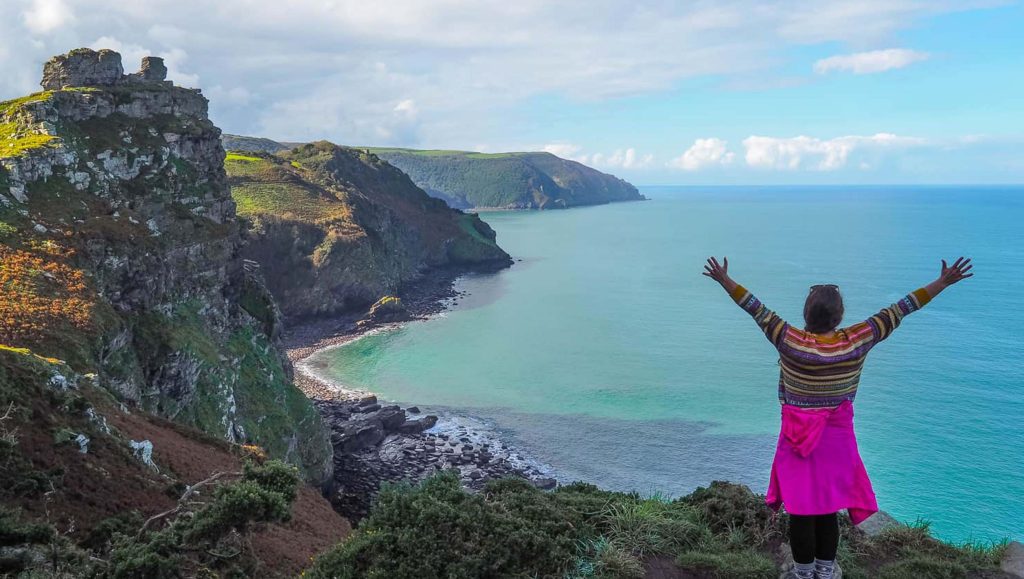
On our last day in North Devon, we packed up our campsite at Damage Barton, taking one last look at the stunning views that had been our backdrop for the past two nights. Reluctantly, we left behind the beauty of North Devon and began our journey back home.
Our road trip through North Devon was a testament to the wonders that the United Kingdom has to offer for those willing to venture off the beaten path. From the sandy shores of Croyde Bay to the clifftop vistas of Damage Barton, we found ourselves captivated by the region’s natural beauty.
Our journey was filled with adventure, from surfing the waves of Croyde Beach to hiking through the Valley of Rocks and riding the Lynton and Lynmouth cliff railway. Each experience left an indelible mark on us, reminding us of the importance of exploring and embracing the world’s natural wonders.
We hope this travelogue serves as both inspiration and a practical guide for those considering their own adventure in North Devon. Whether you’re a seasoned traveler or a novice explorer, North Devon has something to offer everyone. As we left this enchanting region behind, we knew that its beauty would stay with us, fueling our wanderlust for many more adventures to come.